The euphoric extravaganzas that mark India’s festival calendar in the winter months yield some of the best opportunities to plunge into the many delights of the culture hubs of Kolkata in the East and Mysore in the South. Spend treasured moments in the two cities to learn all about why Kolkata’s Durga Pujo and Mysore’s Dasara indulge our culture cravings.
In Kolkata wend your way to the bustling ghats by the Hooghly River where boatmen, flowers seller, potters and other artisanal communities have been eking out a living down the decades. In the month of October, all attention here is directed towards Kumartuli where the artisans transform humble delta clay into gods and goddesses. During the run-up to Durga Pujo are the extravagant models of the Goddess Durga, the object of adoration for all of Bengal.
Marked by exuberant bonhomie the five-day extravaganza spread over — Sashti, Saptami, Ashtami, Navami and Dashami in the autumnal month of October, the worship of the goddess transforms into Bengal’s grandest festival as it welcomes home Ma Durga. The festivities of Durga Pujo merge seamlessly into the pan-Indi festival of Dusshera on Dashami, the last day.
For Bengalis, the world over Durga Pujo is an integral part of their ancient culture, which epitomises the emotional bonding with their land, their people and their community. The joyful welcome to the Ma Durga is not only about welcoming the goddess back to her maternal home on Earth, with her four children—Ganesha, Saraswati, Lakshmi and Kartikeya; it is also a celebration of Durga slaying the evil buffalo- demon Mahishasur, and ‘woman power’—Shakti, of which the goddess is the very epitome. Culture buffs have reasons aplenty to indulge in Durga Pujo, as it goes beyond the devotional experience and transforms into an unrestrained socio-cultural-gastronomic extravaganza in Kolkata. As intrinsic to the festival’s elements such as fasting, prayers and community worship in the decorative pandals where the goddess is enshrined are the more secular pursuits such as the gifting, euphoric family get togethers, gastronomic indulgences, musical performances, amateur theatricals and festive fashion. In Kolkata, the Durga Pujo hotspots are Shovabazar Rajbari, Jorasanko Daw Rajbari, Kundu Rajbari, Hathibagan, Haldar Bari, Bowbazar and Ahiritola.
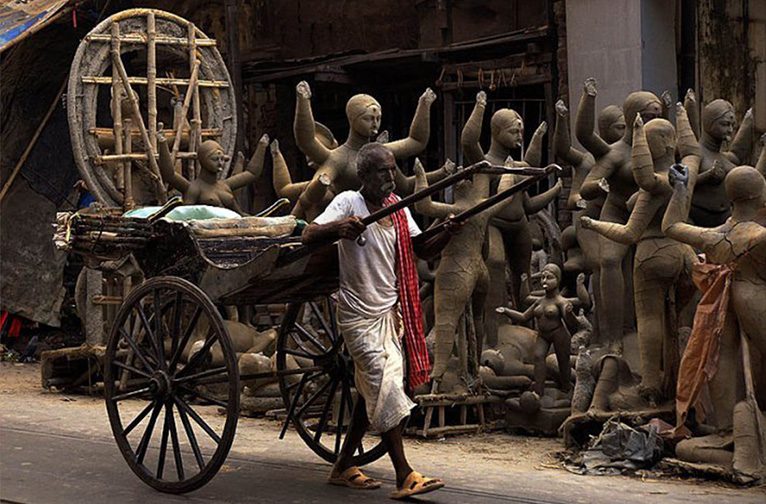
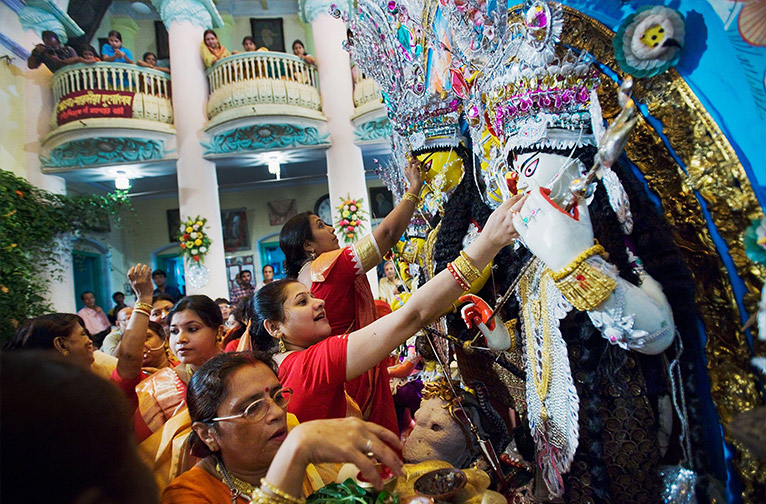
The day of Mahalya marks the ritual of Durga’s journey to her earthly home. The beautifully decorated clay models of Ma Durga are transferred to the elaborate pandals where she is enshrined on the day of Panchnami to the delight of the burgeoning throngs of devotees. From the Whitehouse to the Vatican, no fantasy is left unturned by the designers of the pandals who unleash their creative genius in the adoration of Durga Ma. Each year, the pandals appear to get bolder with these inspirational longings from Kolkata’s artisans who have long reserved this day for the homecoming of the goddess. An intrinsic culture tradition of Durga Pujo’s rituals is pandal–hopping. Feasting with friends and family each night is integral to the festivities.
The day of Navami features a grand aarti signalling the end of spiritual rituals and prayers. On Dashami, the last day, married women indulge in the ritualistic sindur khela in which they smear vermilion powder on the goddess and each other. A moving ceremony that indulges your culture cravings the iconic dhunuchi dance performed with a smoking clay incense pot in front of Ma Durga. You can join the mass of devotees who follow the goddess in the grand parade to bid her sad farewell as she returns to her heavenly abode after being ritually immersed (visarjan) in the waters.
Timing a trip to Mysore around Dasara is perfect for indulging your culture cravings from another very rich tradition of worship and spirituality in India. The bonus is that you also get to enjoy some culture enhancing secular activities as well.
The nucleus for Mysore’s grand Dasara festivities is the stunning Mysore Palace, home of the Wodeyar kings. The amazing palatial residence remains one of India’s most visited living palaces. What you see today is a new structure which replaced the old wooden palace which was razed to ashes by a fire in 1897 during a family wedding. British architect Henry Irwin conceived the new palace as a repository of the power and majesty of a kingly abode. The annual Dasara festivities at the Mysore Palace have been a long unbroken tradition for the Wodeyar kings for over 400 years. Kicking off with nine nights of Navratri and ending on Vijayadashmi the 10th day the Mysore Dasara is today also celebrated as a ‘Nada Habba’, or festival of Karnataka State.
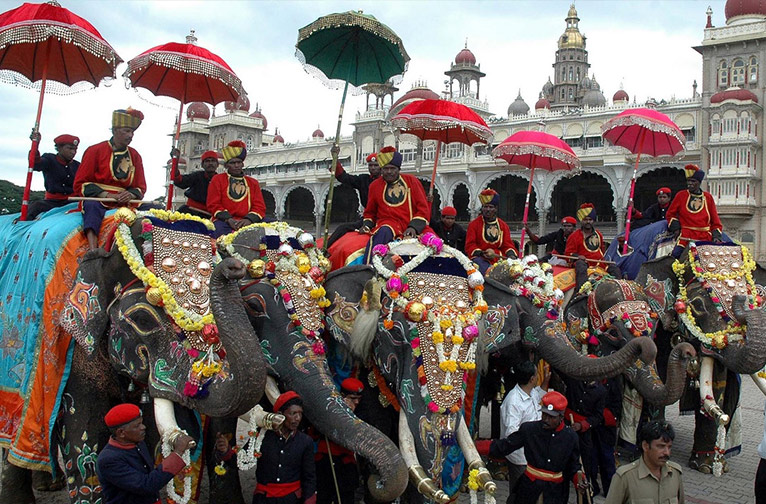
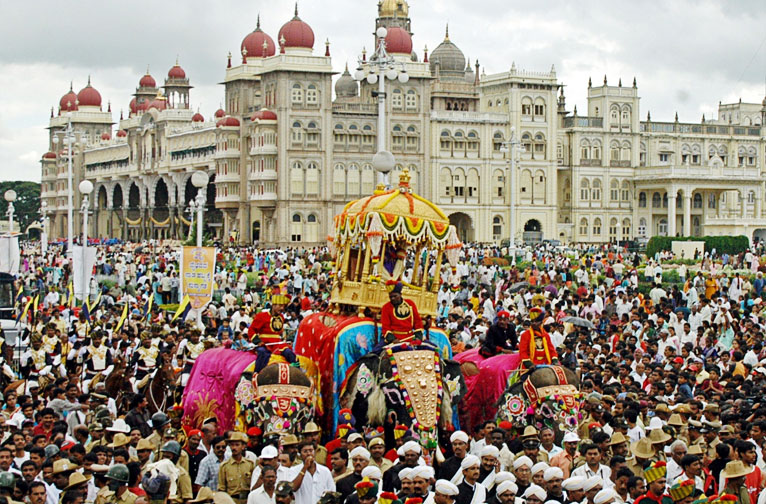
The 10-day festivities of the Dasara festival are devoted to the tutelary deity of the Wodeyar rulers the warrior goddess Chamundeeswari, who is the fearsome form of Shakti, the primeval energy as symbolised by Goddess Durga. Visitors who have enjoyed Kolkata’s worshipful experience of Ma Durga will enjoy another culture extravaganza in the name of another avatar of the beloved goddess.
You should follow the crowds which follow the Dasara events which take place in different locations in Mysore over the ten days. The pomp and pageantry, which is an intrinsic part of the Mysore Dasara are now a legendary the world over, in particular with the culture craving travellers.
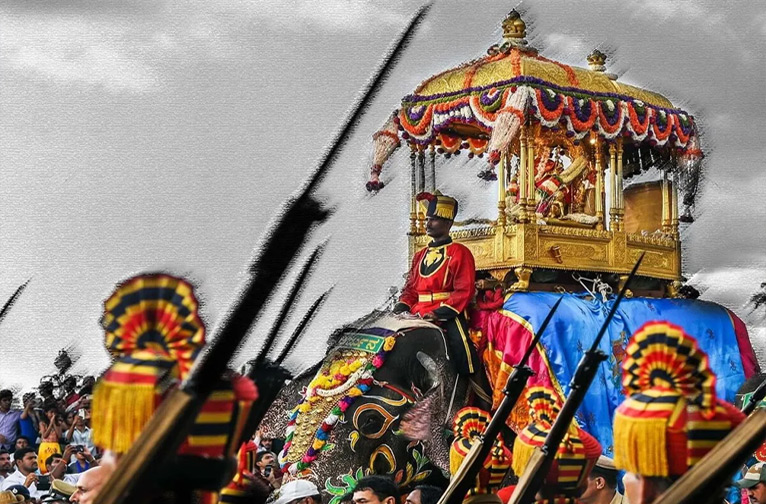
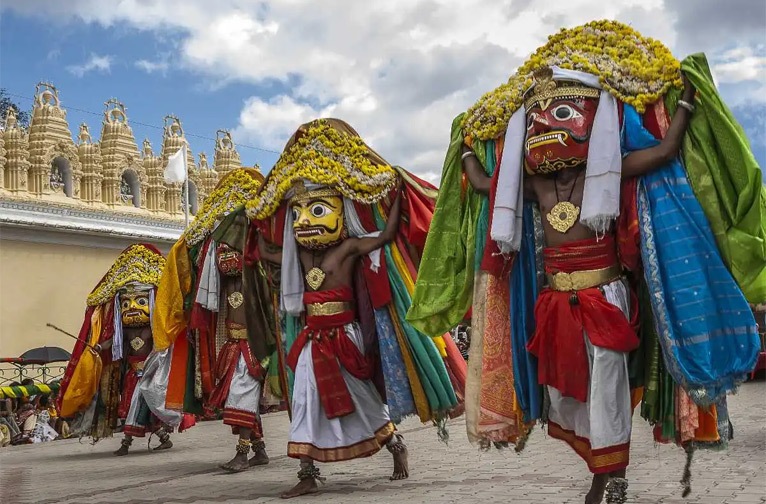
The star extraction at the colourful parade during the Mysore Dasara is the line-up of 12 beautifully caparisoned elephants, specially chosen and trained to be part of these lavish festivities. A series of thrilling events, including several music and dance concerts, are played out across the city to indulge the culture buff. Mingle with the locals and many visitors to watch a traditional wrestling bout in a sandpit, and cheer on the winners. At night, gaze awe-struck upon the beautifully illuminated Mysore Palace and other city landmarks. Indulge your taste buds with the special delicacies prepared for the Dasara festival. The Jamboo Savari and Torchlight Parade are the highlights of Vijayadashmi, the last day of the Mysore Dasara. Riding a richly decorated elephant, Goddess Chamundeeswari, seated in the fabled Golden Howdah of the Mysore royals, leads the extravagant Dasara procession to the delight of the great throngs massed along the parade route.
While the two festivals certainly offer many thrilling aspects of the rich culture and traditions of both Kolkata and Mysore, make it a point to travel to them all year round for lots of new experiences to indulge your culture cravings.